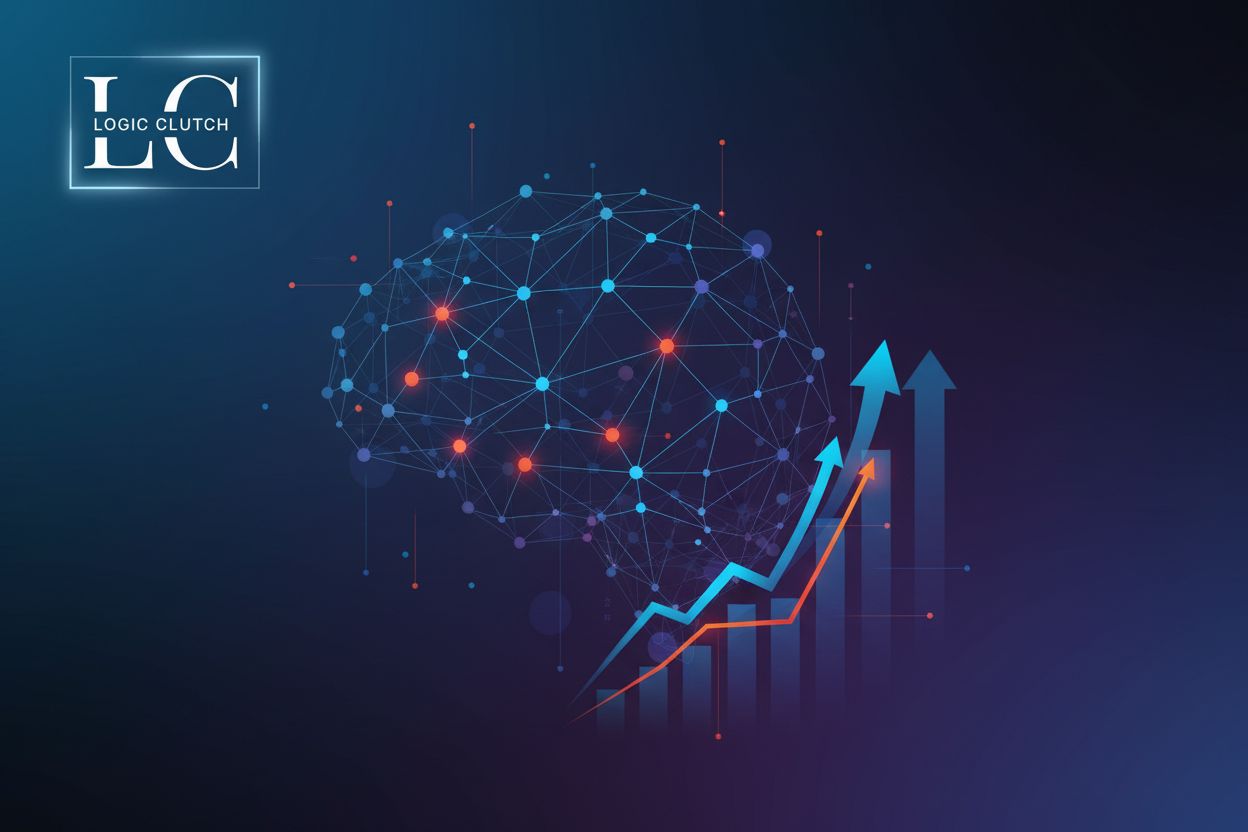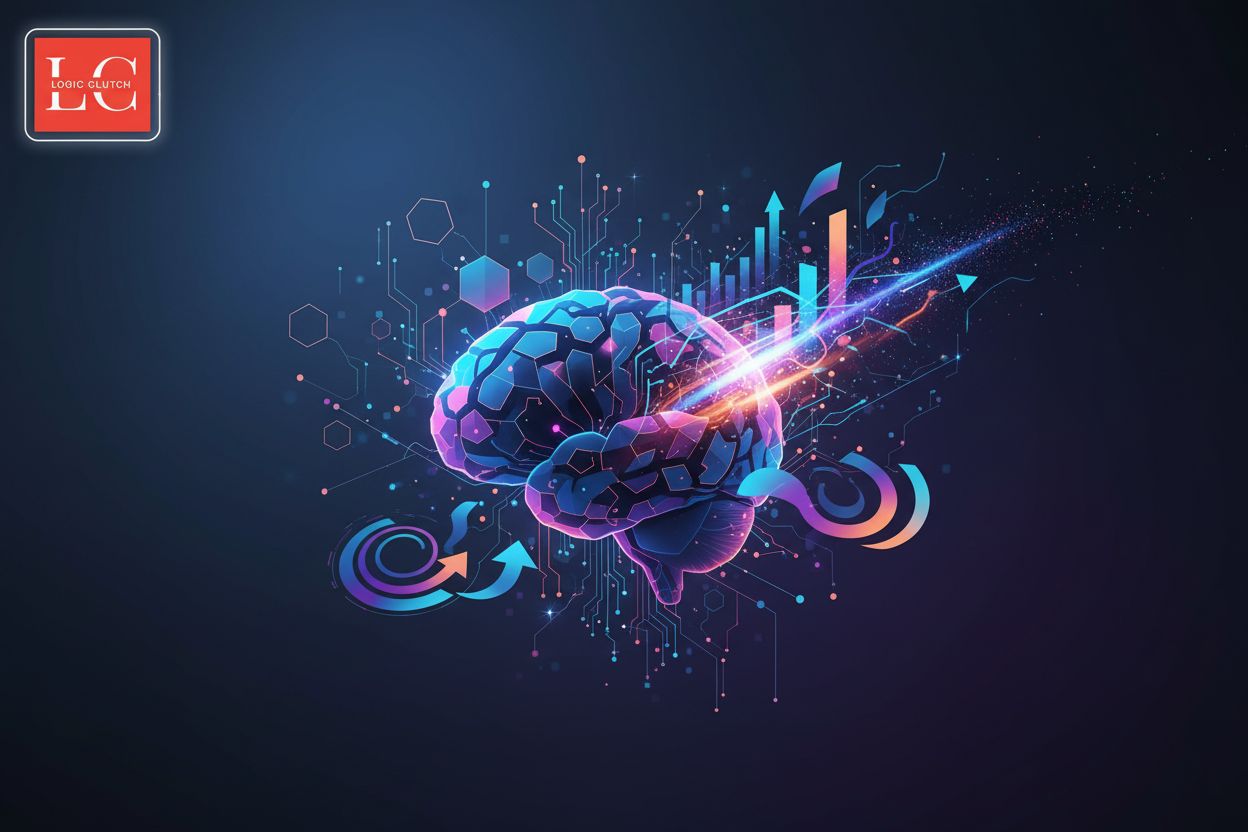Learning & Resources for AI Analytics in Enterprises
TL;DR
The Growing Importance of AI Analytics in Today's Enterprises
Okay, so you're asking about the deal with ai analytics in today's business world, huh? It's kinda like asking if having a smartphone is important – like, yeah, it pretty much is these days!
Data-driven decisions aren't optional anymore. Companies drowning in data but starving for insights? ai analytics is the lifeboat. (Drowning in Data, Starving for Insights - Agile Business Consortium) It sifts through the noise to pinpoint whats actually important, showing where you should invest your resources.
Competitive edge? ai is the new sword. I was reading this guide from Gartner - Enterprise Guide to Generative AI: Expert Insights on ROI, Use Cases, and Cost Management - and it talks about how crucial it is to identify valuable use cases and avoid costly mistakes in ai implementation. If you're not using ai to optimize processes; someone else probably is, and that's not good news for you. (Is AI Making Us Lazy? - Cal Newport)
Digital transformation? ai is the engine. All these enterprises talking about digital transformation...well, ai is how you actually get there. Automating tasks, personalizing customer experiences, and predicting market trends, is what makes the promise of digital transformation a reality. (AI-Driven Digital Transformation Strategies & Trends - ON24)
ai isn't just some chrome bolted onto traditional analytics. It's more like replacing the engine with a freakin' warp drive!
ai crushes the grunt work. Think about it - automatically cleaning data, identifying correlations, and spitting out reports? It's a massive time saver. This frees up your team to focus on strategic stuff, you know, the things that actually require human brains.
Find patterns we humans would miss. ai can spot subtle relationships in data that would take us ages to uncover, if ever. For example, in retail, it can predict which product combinations drive sales, or in healthcare, identify risk factors for diseases way before symptoms show.
More accurate predictions? Yes, please. Traditional analytics is like looking in the rearview mirror, but ai is like having a crystal ball. It can predict future outcomes with far greater accuracy, so you can make proactive decisions, not reactive ones.
So, ai analytics ain't just a fad – it's the future. Next up, we'll look at how to build an ai analytics team and foster a data-driven culture within your organization.
Foundational Learning Paths for AI Analytics
Okay, so you're looking into foundational learning paths for ai analytics? It's more than just knowing how to code; it's understanding the why behind the what. Think of it like learning to cook: knowing recipes is one thing, but knowing how flavors interact is where the magic happens.
Aspiring ai analytics pros need a blend of skills. It's not enough to just be a math whiz or a coding guru; you need to speak the language of business too. Here's what you'll want to focus on:
- Statistics and Mathematics: This is non-negotiable, folks. You need to understand distributions, regressions, and statistical inference like the back of your hand. It's the bedrock of understanding data.
- Machine Learning Fundamentals: Vital. Knowing the difference between supervised and unsupervised learning, and when to use each, is crucial. Plus, understanding algorithms like decision trees, support vector machines, and neural networks is a must.
- Data Visualization and Communication: So underrated! You could have the most brilliant insights, but if you can't communicate them effectively, what's the point? Being able to create compelling visuals and tell a story with data is key.
So where do you actually learn all this stuff?
- Online Courses: Coursera and edx have fantastic courses on statistics, machine learning, and data science.
- Google ai Professional Certificate: This certificate from Google provides a solid introduction to AI concepts and practical applications, helping you build foundational skills in areas like machine learning and data analysis.
- Salesforce ai Certifications: Salesforce offers several AI certifications, such as the Salesforce Certified AI Associate or specific certifications related to Einstein, which focus on applying AI within CRM contexts for tasks like customer service and sales forecasting.
Now that we've covered the basics, let's dive into some more advanced resources to really deepen your knowledge.
Advanced Resources for In-Depth AI Analytics Knowledge
Alright, so you're diving into advanced ai analytics resources? Cool, because just knowing the basics ain't gonna cut it if you wanna really get this stuff. Think of it like this: you can read a Wikipedia article about quantum physics, but that ain't the same as actually, you know, understanding it.
If you're serious about ai analytics, you gotta hit the books – and the academic books, that is. I'm talking stuff that goes way beyond basic tutorials.
- There's some seriously influential books on machine learning and deep learning that are practically required reading. We're talkin' the bibles of the field.
- Don't forget academic papers – they're where the bleeding-edge research gets published. You'll find all sorts of advanced ai analytics techniques in those things, from crazy new algorithms to novel approaches to old problems.
- And to stay in the loop, find some good journals and publications that focus on ai research. That way, you're always up-to-date on the latest and greatest.
Books are great, but nothing beats getting hands-on and networking with other smart folks. That's where conferences, webinars, and workshops come in.
- There's some major ai and data science conferences that are total must-attends. They're like Comic-Con for nerds, but instead of superheroes, it's all about algorithms.
- And if you can't make it to a conference, there's tons of online webinars and workshops where you can pick up practical ai skills from the comfort of your couch.
- Plus, be on the lookout for events that are specifically focused on ai analytics in your particular industry. It's always good to hear from people who are facing the same challenges as you.
Industry reports are like CliffsNotes for the business world – they can give you a quick overview of what's happening, without having to read a million pages of dense text.
- Check out gartner's magic quadrant for analytics and bi platforms. Gartner is a great resource for understanding the ai landscape.
- McKinsey and Deloitte also put out reports on ai adoption in enterprises that are worth a read.
- And don't forget about industry-specific reports that dive into the ai analytics trends that are most relevant to your field.
So, armed with all these resources, you'll be well on your way to becoming an ai analytics master. Next, we'll take a look at the practical tools and platforms you can use to implement AI analytics in your organization.
Practical Tools and Platforms for AI Analytics Implementation
Alright, so you're looking for the lowdown on practical ai analytics tools and platforms for enterprises? Well, buckle up, because it's not just about picking the shiniest gadget – it is about finding what actually works for your business, ya know?
Picking an ai analytics platform isn't easy; it's a bit like choosing a favorite kid – they all got something special. You've got your big names like TensorFlow and PyTorch, and they're kinda like the OGs of machine learning, offering flexibility and power. But, they also need a bit of elbow grease to get going.
- TensorFlow: Think of it as the reliable workhorse – great for production, scalable, but has a steeper learning curve. It's kinda like learning to drive a manual transmission.
- PyTorch: Then there's PyTorch, more like the cool, hip younger sibling. It's all about research and rapid prototyping, super intuitive, but might need some extra love to deploy at scale.
And then you've got platforms like DataRobot and H2O.ai, which are more like "ai-as-a-service" – they're trying to make ai more accessible to non-experts. Choosing between them depends on your team's skillset, budget, and what you're actually trying to do with ai, ya know?
Don't forget about the CRM giants jumping into the ai game, though. Salesforce Einstein is one that comes to mind -- it's designed to weave ai into your existing CRM workflows.
- Imagine your sales team getting ai-powered leads, or your marketing folks personalizing campaigns like it's nobody's business. Einstein can help with things like predictive lead scoring, identifying upsell opportunities, and automating customer service responses, making your CRM smarter and more intuitive.
And hey, there's a whole world of open-source tools out there that you shouldn't ignore, either. Libraries like scikit-learn, pandas, and numpy are like the swiss army knives of data science. They're free, powerful, and let you build custom ai solutions without breaking the bank.
Choosing the right tool, or combination of tools, is key. Gartner's Magic Quadrant for Analytics and BI Platforms is a great resource for understanding the ai landscape.
Next up, we'll dive into some real-world examples of how AI analytics is being successfully implemented in enterprises.
Case Studies: Successful AI Analytics Implementations in Enterprises
Okay, so you're curious about how AI analytics is playing out in real businesses? It's not just theory, folks are actually doing this stuff. Let's dive into some examples – no fluff, just the facts.
AI analytics is making waves in healthcare, and it's not just about fancy robots.
- Predicting patient readmissions: Hospitals can use AI to analyze patient data and predict who is at high risk of being readmitted. This allows for intervention and support after discharge, potentially improving patient outcomes. For instance, Mayo Clinic has explored AI for predicting patient deterioration.
- Personalizing treatment plans: AI can analyze a patient's medical history, genetic information, and lifestyle to create a personalized treatment plan. This ensures that each patient receives the most effective care tailored to their specific needs. Companies like Tempus are using AI to personalize cancer treatments.
- Optimizing hospital operations: AI can be used to optimize hospital resource allocation, predict patient flow, and improve overall efficiency. This leads to better patient care and reduced costs. GE Healthcare has developed AI solutions for optimizing hospital workflows.
Retailers are using AI to get smarter about their customers and drive sales.
- Personalizing product recommendations: AI can analyze customer browsing history, purchase data, and demographics to provide personalized product recommendations. This can increase sales and improve customer satisfaction. Amazon is a prime example, with its recommendation engine driving a significant portion of its sales.
- Optimizing pricing strategies: ai is being used to dynamically adjust prices based on demand, competitor pricing, and other factors. This helps retailers maximize profits and stay competitive. Walmart uses AI for dynamic pricing to remain competitive.
- Improving supply chain efficiency: Predictive analytics can help retailers forecast demand, optimize inventory levels, and streamline logistics. Procter & Gamble leverages AI to optimize its global supply chain.
The financial industry is using ai to stay secure and manage risk effectively.
- Identifying fraudulent transactions: ai models can detect unusual patterns and flag potentially fraudulent transactions in real-time. Visa uses AI to detect and prevent fraud across its network, saving billions annually.
- Assessing credit risk: ai can analyze vast amounts of data to assess the creditworthiness of loan applicants. This helps lenders make more informed decisions and reduce risk. JPMorgan Chase uses AI for credit risk assessment.
- Improving regulatory compliance: ai can automate compliance monitoring, helping financial institutions stay on top of ever-changing rules.
So, yeah, ai analytics is proving its worth across many industries. What's next? Let's talk about overcoming challenges and future trends in AI analytics.
Overcoming Challenges and Future Trends in AI Analytics
Okay, so ai analytics is cool and all, but let's be real - it's not all sunshine and rainbows, right? Like anything powerful, there's challenges and stuff we gotta think about when using it. Plus, where's it all headed, anyway?
One of the biggest headaches is data privacy. We need to make sure we're not, like, accidentally leaking sensitive info or violating people's rights. Think about it: are we really doing enough to anonymize data and keep things secure?
And then there's the whole ethical ai thing. It's not enough to just have ai; it needs to be fair ai. That means no biased models spitting out discriminatory results - which, honestly, takes a lot of work to avoid.
Complying with regulations like gdpr and ccpa aren't optional either. These laws are in place to protect peoples data, and we need to make sure our ai analytics are playing by the rules.
What's coming down the pike? Well, generative ai and llms are only gonna get bigger. These tools are already changing how we create and analyze data, and that's just the beginning. For AI analytics, this means new ways to generate synthetic data for training, automate report writing, and even create novel insights from unstructured text.
But as ai gets more powerful, we also need explainable ai (xai). It's cool if ai can predict stuff, but we also need to understand why it's making those predictions. Black boxes aren't gonna cut it anymore. XAI will become crucial for building trust, debugging models, and meeting regulatory requirements, allowing us to understand the reasoning behind AI decisions.
And don't forget about edge computing. As ai gets pushed to the edge, closer to where the data is actually generated, we'll see even faster and more efficient analytics. This means real-time insights from devices like sensors, cameras, and autonomous vehicles, enabling immediate decision-making without relying on cloud connectivity.
Seriously, the ai world is changing so fast, that if you're not constantly learning, you're falling behind. It's just a fact.
That means keeping up with new technologies and techniques, and fostering a culture of innovation and experimentation within your organization. Don't be afraid to try new things and push the boundaries.
Ultimately, ai analytics is a journey. It’s about overcoming challenges, embracing new trends, and never stopping learning. If we can do that, we'll be well-positioned to unlock the full potential of ai and drive real value for our organizations.






